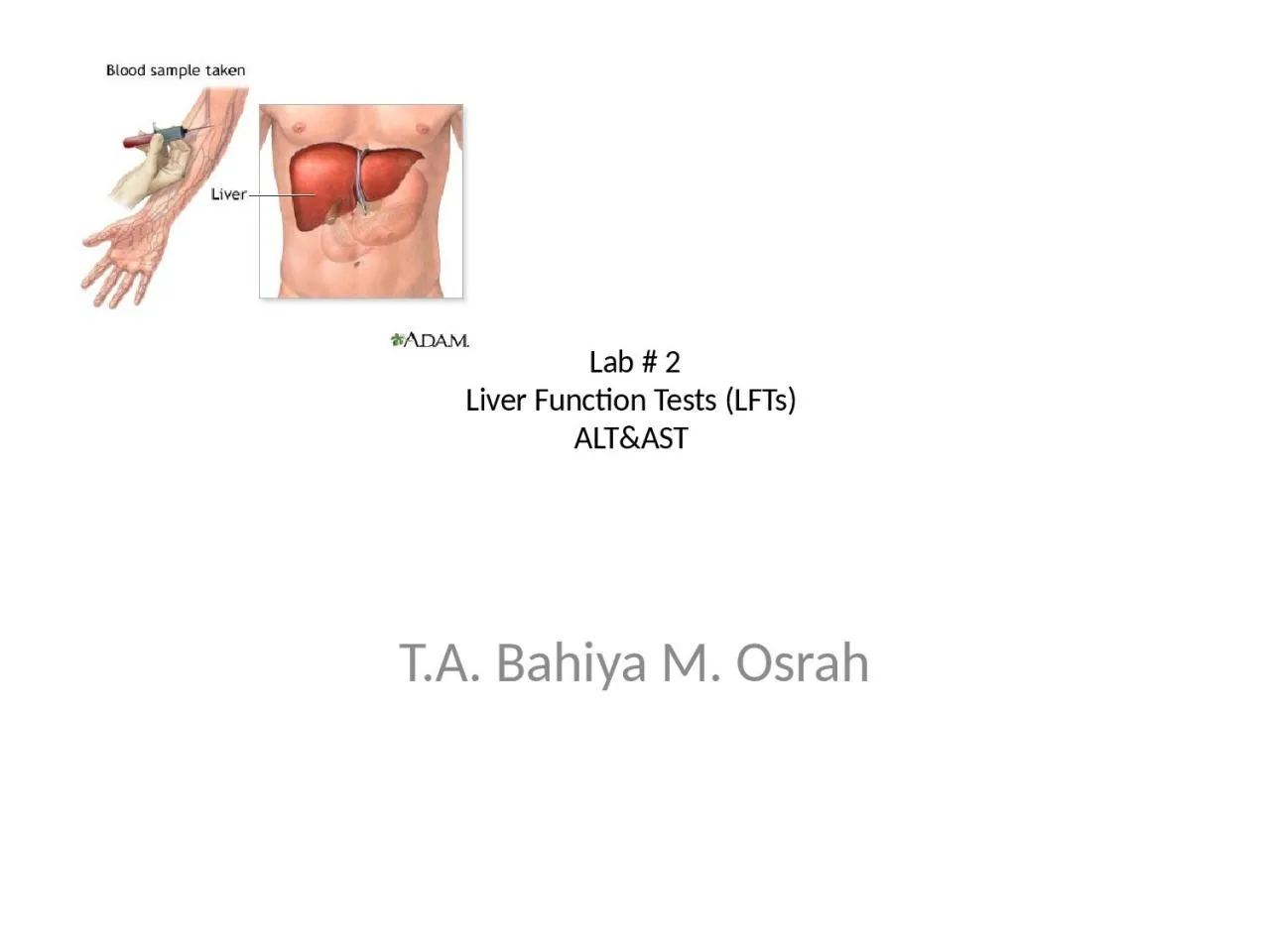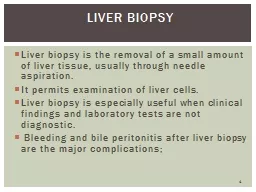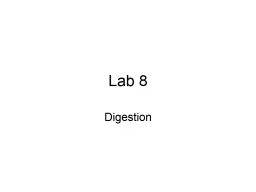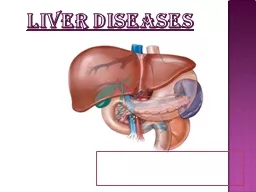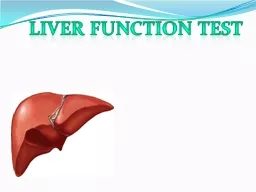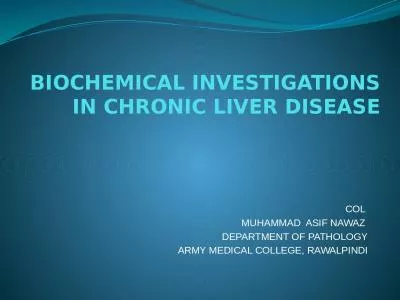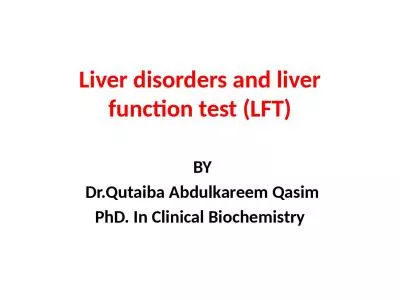PPT-Lab # 2 Liver Function Tests (LFTs)
Author : helene | Published Date : 2022-06-07
ALTampAST TA Bahiya M Osrah Liver Functions The liver is in the upper right part of the abdomen The functions of the liver include 1storing glycogen fuel for
Presentation Embed Code
Download Presentation
Download Presentation The PPT/PDF document "Lab # 2 Liver Function Tests (LFTs)" is the property of its rightful owner. Permission is granted to download and print the materials on this website for personal, non-commercial use only, and to display it on your personal computer provided you do not modify the materials and that you retain all copyright notices contained in the materials. By downloading content from our website, you accept the terms of this agreement.
Lab # 2 Liver Function Tests (LFTs): Transcript
Download Rules Of Document
"Lab # 2 Liver Function Tests (LFTs)"The content belongs to its owner. You may download and print it for personal use, without modification, and keep all copyright notices. By downloading, you agree to these terms.
Related Documents

